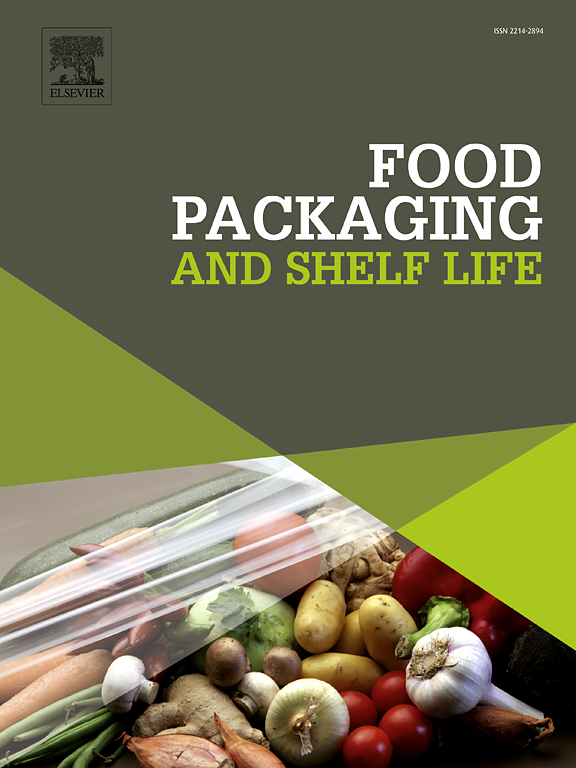Effect of modified atmosphere on the growth of dominant fungal species in grains during storage
IF 8.5
1区 农林科学
Q1 FOOD SCIENCE & TECHNOLOGY
引用次数: 0
Abstract
Post-harvest fungal growth on grains can cause problems in terms of both quality and food safety. This study demonstrated the different antifungal effects of a CO2 and N2 modified atmosphere (MA) at different concentrations against specific dominant fungal species isolated from stored grains in vitro and in situ. The results showed that, among all CO2 and N2 MA conditions, 65 % CO2 had the best inhibitory effect on mycelial growth, and its inhibition rate against all strains, except Fusarium verticillioides, was greater than 80 %. In addition, simulative storage tests indicated that MA can significantly inhibit fungal spore reproduction and delay mildew occurrence at high temperatures and moisture content of grains. CO2 MA is typically far more effective at inhibiting fungal growth than N2 MA owing to its significant suppressive effect on xerophilic storage fungi. The moisture content of grains is a critical determinant of the propagation of fungal spores, which is a prerequisite for determining the composition of MA gases. Once the moisture content meets the conditions conducive to fungal spore proliferation, temperature can affect the rate of spore reproduction, thereby influencing the inhibitory effect of MA. This study enriches the theoretical foundation associated with the assessment and application of MA grain storage technology, which can offer crucial guidance for grain storage managers and farmers in implementing this technology.
改良气氛对贮藏期间谷物中优势真菌生长的影响
收获后谷物上的真菌生长可能会导致质量和食品安全问题。本研究证实了不同浓度的CO2和N2修饰气氛(MA)对从储藏谷物中分离的特定优势真菌的抑菌效果不同。结果表明,在所有CO2和N2 MA条件下,65 % CO2对菌丝生长的抑制效果最好,除黄萎病菌外,对所有菌株的抑制率均大于80 %。此外,模拟贮藏试验表明,在高温和高水分条件下,MA能显著抑制真菌孢子繁殖,延缓霉菌的发生。由于CO2 MA对嗜干贮藏真菌具有显著的抑制作用,因此CO2 MA在抑制真菌生长方面通常比N2 MA有效得多。谷物的水分含量是真菌孢子繁殖的关键决定因素,是确定MA气体组成的先决条件。一旦水分含量达到有利于真菌孢子增殖的条件,温度就会影响孢子繁殖的速度,从而影响MA的抑制效果。本研究丰富了MA储粮技术评价与应用的理论基础,对储粮管理者和农民实施该技术具有重要的指导意义。
本文章由计算机程序翻译,如有差异,请以英文原文为准。
求助全文
约1分钟内获得全文
求助全文
来源期刊

Food Packaging and Shelf Life
Agricultural and Biological Sciences-Food Science
CiteScore
14.00
自引率
8.80%
发文量
214
审稿时长
70 days
期刊介绍:
Food packaging is crucial for preserving food integrity throughout the distribution chain. It safeguards against contamination by physical, chemical, and biological agents, ensuring the safety and quality of processed foods. The evolution of novel food packaging, including modified atmosphere and active packaging, has extended shelf life, enhancing convenience for consumers. Shelf life, the duration a perishable item remains suitable for sale, use, or consumption, is intricately linked with food packaging, emphasizing its role in maintaining product quality and safety.
 求助内容:
求助内容: 应助结果提醒方式:
应助结果提醒方式:


